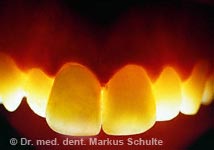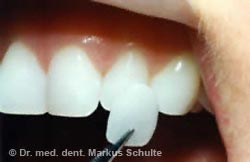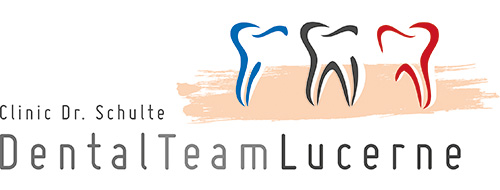Veneers (Porcelain Laminate Veneers)
What are porcelain veneers?


Veneers are wafer-thin (approx. 0,5 mm) translucent porcelain (=ceramic) facings made in the laboratory after an impression. They are fixed permanently to the tooth’s front surface using a special adhesive method. The porcelain facing covers the visible surface of the tooth completely.
What advantages do ceramic veneers offer?

In comparison with traditional crowns, veneering is much more conservative, and only minimal substance is removed from the tooth. In addition, veneers are robust and long-lasting.
The main advantage, however, lies in the veneers’ outstanding aesthetics, which are by far superior to that of metal core crowns. In comparison to a crown, the transitional area of the wafer-thin porcelain facing is almost invisible and needs not be placed under the gums. Gingivitis, receding gums, and exposed crown margins are problems often associated with crowns, but not with veneers. Before veneering treatment, we recommend whitening discoloured teeth using a gentle bleaching process. This avoids the risk of unsightly shade effects.
Veneers are the first choice when correcting the form of anterior teeth. They allow successful correction of tooth misalignment, gaps, form and shade, with superb aesthetics.
Advantages and disadvantages of ceramic veneers
+ Ideal aesthetics
+ Form and alignment correction possible
+ Gentle to teeth and gums
+ Long-lasting
- Fairly expensive
- Require two treatment sessions

